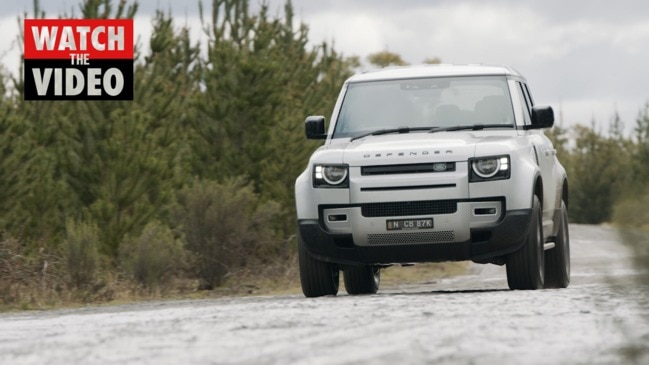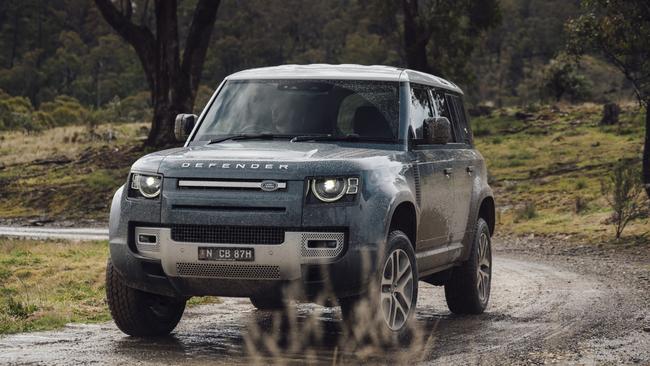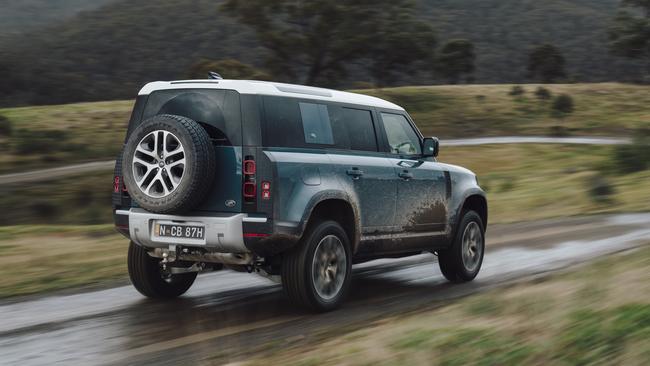Land Rover Defender review: Cult favourite undergoes massive transformation
This tough SUV has an army of fans around the globe despite the fact it has remained largely unchanged for decades. Now it’s been transformed.

Luxury
Don't miss out on the headlines from Luxury. Followed categories will be added to My News.
The Land Rover Defender had remained relatively unchanged for about 70 years, until now. The British maker released the all-new version of the cult favourite earlier this year and it represents a massive step forward compared to the first generation.
Here are five things you need to know about the all-new Land Rover Defender.
IT’S NOTHING LIKE THE PREVIOUS MODEL
And that’s a good thing. The purists might bemoan the departure from the old Defender and its no-frills, go-anywhere character, but the new model remains extremely capable off-road and infinitely more composed and comfortable on the bitumen. The new model has a higher wading depth (900mm to 500mm), adaptive air suspension that can raise for trickier terrain and ingenious tech that shows you on the centre display screen what the terrain looks like under the bonnet. It’s like having x-ray vision. There’s also hill launch assist, a low traction launch function, roll stability control and a terrain response feature that adjusts the traction control to suit snow, mud, gravel and rocks. It’s much roomier inside, too as it’s appreciably wider and longer than before. And those roof rails on top aren’t for show — they’re strong enough to take a two-person tent.

THINK TWICE IF YOU LIVE IN THE INNER CITY
The new Defender is huge. Sitting in the driver’s seat, you feel ten-foot-high and bulletproof, which is great on the open road, but those narrow city lanes and side streets can be a little daunting. You notice it most when parking and doing U-turns — it can feel like your piloting the QEII around your local swimming pool. Thankfully, there’s a camera that gives you a birdseye view of the car for parking in tight spots, but it only goes part of the way to alleviating the nerves.

IT LOOKS VERY COOL
The Defender gets the type of looks from passers-by usually reserved for sports cars. It’s big and bold, with just the right amount of retro style around the head and tail-light design. The spare wheel on the back door gives it that rugged touch, while the slat windows in the roof pay homage to the original. The interior is utilitarian chic, with exposed beams and bolt heads, durable rubber mats and chunky controls, combined with crisp digital displays in front of the driver and on the dash. Connectivity is catered for by multiple USB and 12-volt outlets front and rear, while the seats are like comfy armchairs.

THIS IS NO TRUCK
Off-road prowess and on-road manners are usually traded off against each other, but despite the Defender’s undoubted ability in the rough stuff, it feels remarkably well planted and refined on the road. The standard air suspension irons out road wrinkles like a luxury sedan and the cabin has a high-end hush to it. It’s not as cumbersome as some rivals through the bend, resisting lurching from side-to-side through corners and pitching under brakes. The steering feels connected and precise as well, adding to the driving enjoyment. Big, tall and boxy, it’s never going to feel nimble, but it’s predictable and stable. We drove the P400, which is powered by a 3.0-litre six-cylinder turbo pumping out 294kW and 550Nm and can do the 0-100km/h sprint in six seconds. It’s a hoot to drive, but not the most sensible of choices as it’s thirsty around town. Diesel options make more sense.

HERE’S THE BAD NEWS
Our test car had a recommended retail price of $95,335, but a long list of options and accessories blew that out to $112,327. Land Rover still stings buyers for stuff that’s standard on $30,000 SUVs and hatchbacks, such as wireless device charging and privacy glass. There is some good news, though. A $2086 driver assist pack that included blind-spot warning and adaptive cruise control is standard for 2021 models, which can be ordered now.
Originally published as Land Rover Defender review: Cult favourite undergoes massive transformation



